TOUR THROUGH
|
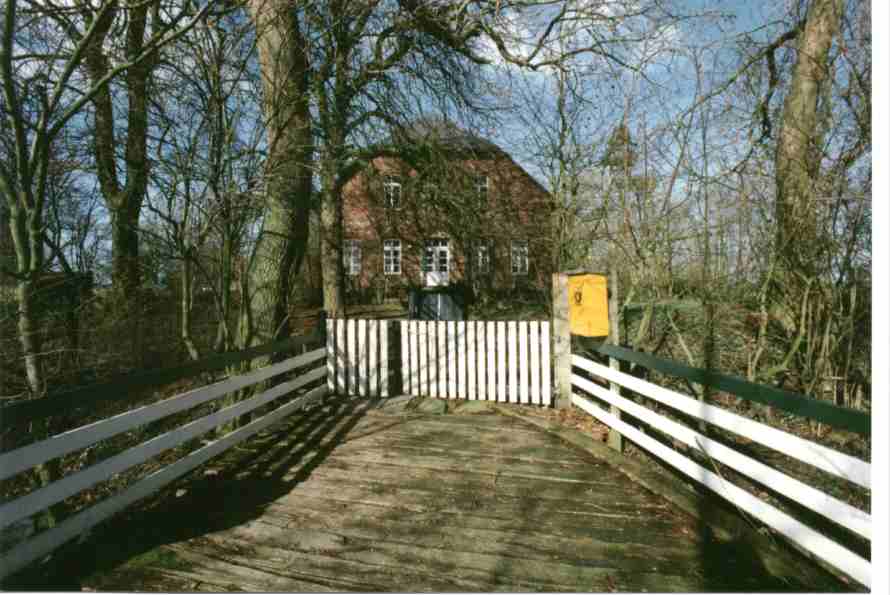
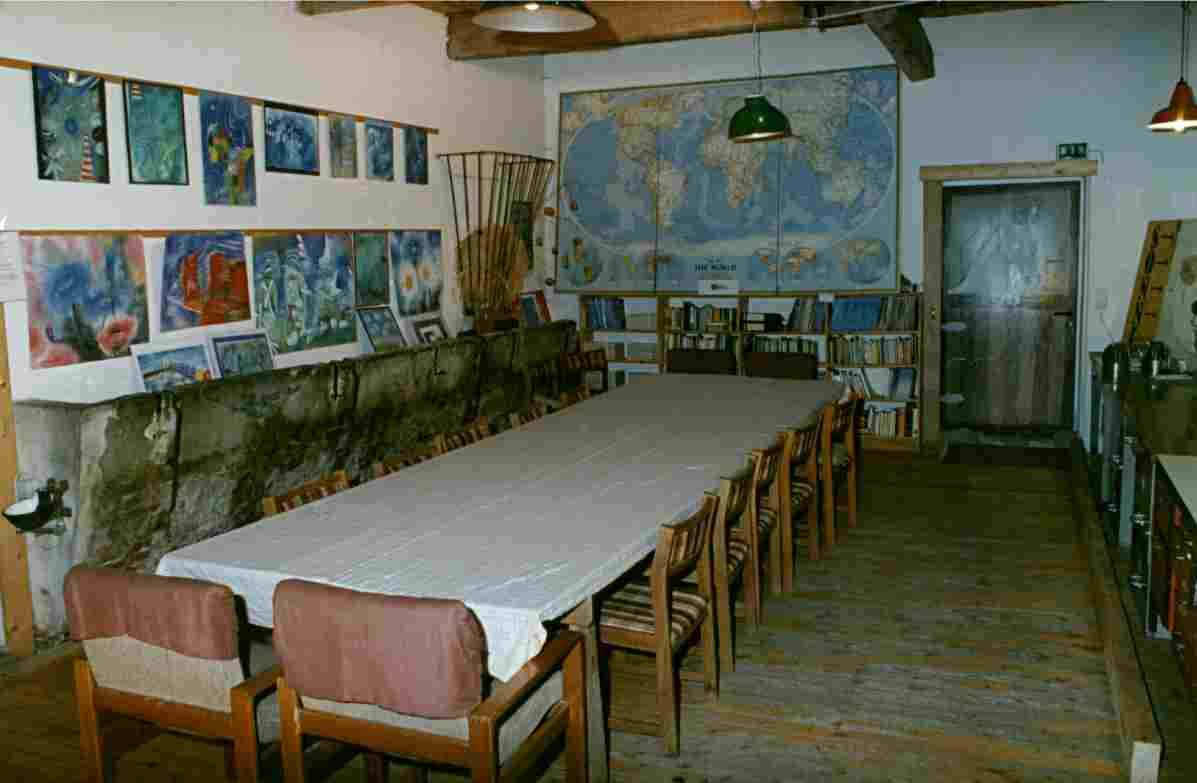
The tour will start in the work-shop room where we have enough room to get down to business and start working: Tool or other materials can be put on an eight meter long table at the window side which makes clearing the table in the middle for lunchtimes a lot quicker. This table can be moved and has seats for at least 16 and up to 30 people.
In the side tables you will find the normal work shop equipment: Overhead projector, video recorder and a monitor. On top of that you will find the office material here as well as some folders with historic Iffens pictures to have a look at. In the four drawers you can find handouts about regional landmarks and city/road maps of the surrounding area. The book shelves contain general eco literature and some magazines
Next to this room is a kitchen with stainless steel fittings and a fast working oven. There is enough tableware, cutlery and kitchen equipment with a few spare ones.
On the edge of the counter with its historic bricks you can find some postcards for sale.
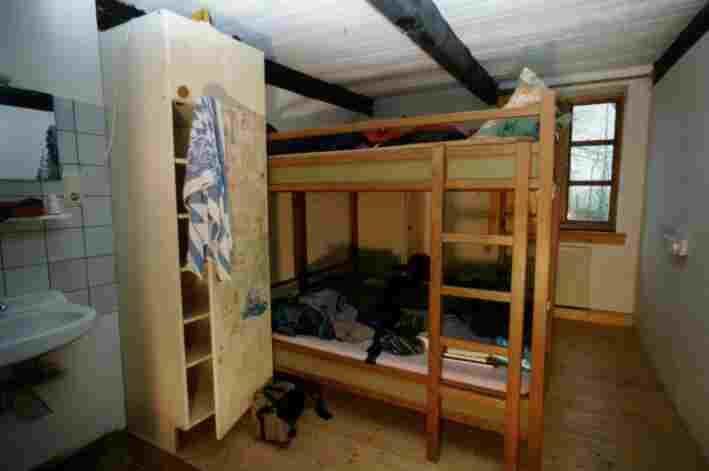
The six rooms with in total 22 comfortable beds are simply furnished and ressemble in their narrowness berths on a ship. As we often only have courses with up to 15 participants there will be enough room for everybody. When planning the hostel we put an emphasis on having good working possibilities while the sleeping facilities didn't matter that much. The bunk beds are still quite comfortable. There are five rooms with four beds (2 bunk beds) each and one room with one bunk bed. This can be used as a "group leader" room having a telephone access and more table surface. An own bathroom is under construction.
Next to the rooms there is the working area for biology and microscopy.
We only have a few first class optical devices (Olympus-, Zeiss- and Olympus-stereo-magnifying glas), the rest has school quality. This working area can also be used as computer corner, a printer shop or anything else by moving the furniture around.
There is a big board with information on public transport, tide timetable as well as "Bioland" products lit by a gothic window.
In the cupboards you can find cleaning equipment. Behind the cupboards there are boards with a collection of board games.
There is bed linen and towels for those who forgot to bring them and you can rent mosquito nets if needed.
Here you also find the sanitary area. Apart from toilets and shower we as tree huggers ;-) also have a washing machine and a tumble dryer. As we often come back from a outdoor trip completely soaked both machines come to our rescue. The hostel part of the building ends here.
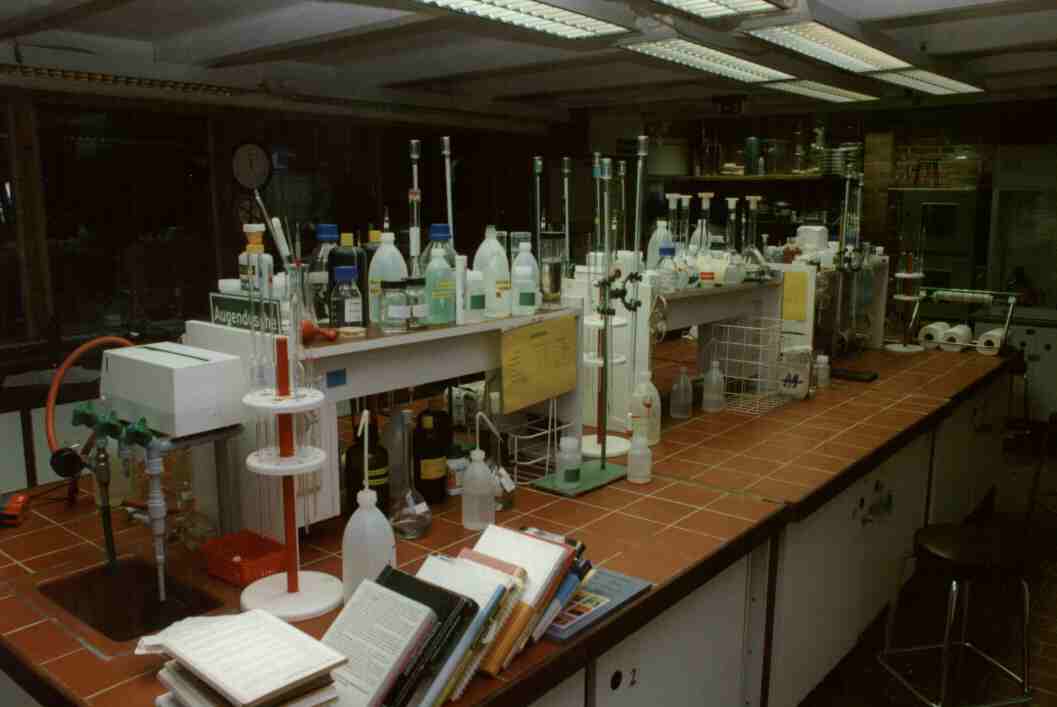
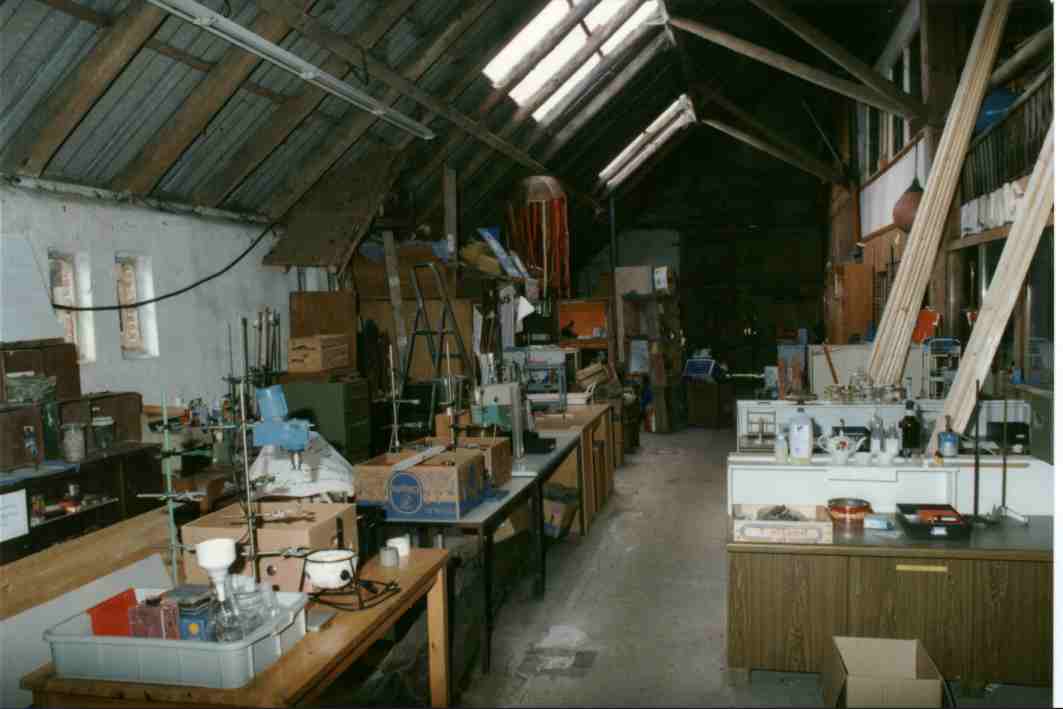
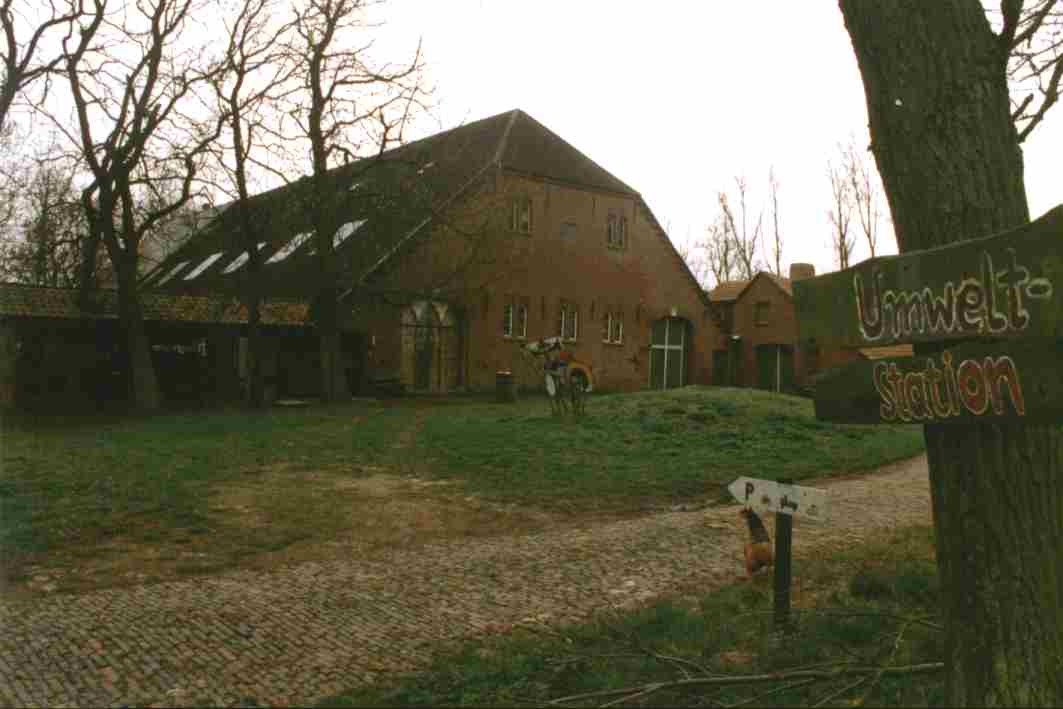
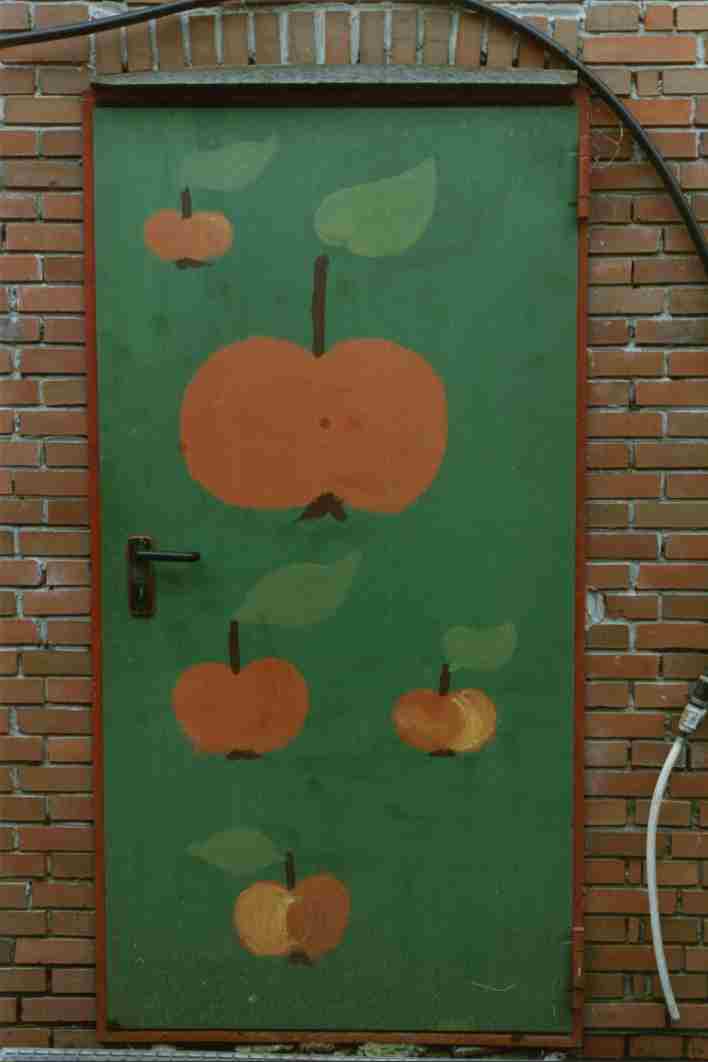 Behind the garage we come to the apple (cider) press, which has its busiest time in autumn. We press 30.000 litre juice each year for about 180 families in the region. On top of that we have our own room for any further processing of the apple juice (pasteurizing or wine making). Otherwise we use this room for vegetables and rhubarb preparations or storage room for sheep or hen food.
We leave the firewood store on our side and come to the sheep stable. Above our heads is the storage room for hay which in winter times can contain up to 800 bales coming from three hectare mowing grounds for our 22 to 30 sheep.
Behind the garage we come to the apple (cider) press, which has its busiest time in autumn. We press 30.000 litre juice each year for about 180 families in the region. On top of that we have our own room for any further processing of the apple juice (pasteurizing or wine making). Otherwise we use this room for vegetables and rhubarb preparations or storage room for sheep or hen food.
We leave the firewood store on our side and come to the sheep stable. Above our heads is the storage room for hay which in winter times can contain up to 800 bales coming from three hectare mowing grounds for our 22 to 30 sheep. On your right you can see the stable and courtyard for our busy hens and ducks. The large concave mirror connects us with the sun energy and is also used in sonic experiments.
On the west side of the yard our new barn is under construction for machines and the sheep.
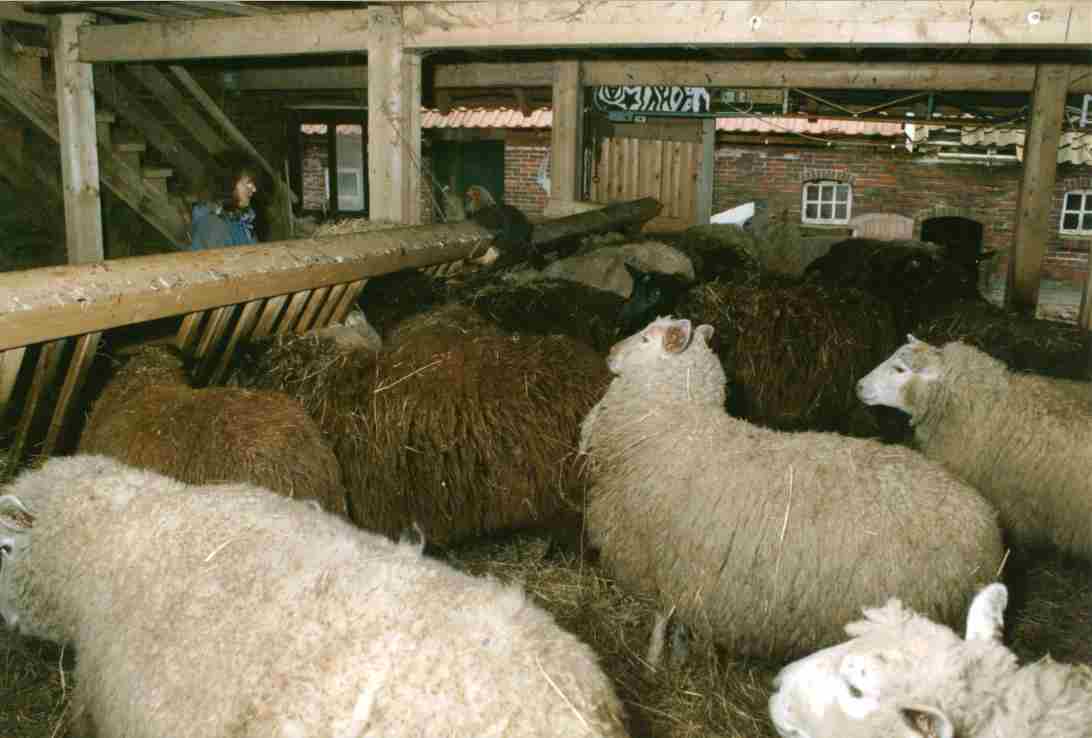 The pastures to the west belong to the farm, in total we have 10 hectare mowing pastures in Iffens and 10 hectare wood in Ammerland (near "Zwischennahener Meer"). Along the duck pond a path leads to the Beckmannsfelder Weg. Following this small street, you would come to the dike, den salt march and the mudflat in Jadebusen (700 metres).
The pastures to the west belong to the farm, in total we have 10 hectare mowing pastures in Iffens and 10 hectare wood in Ammerland (near "Zwischennahener Meer"). Along the duck pond a path leads to the Beckmannsfelder Weg. Following this small street, you would come to the dike, den salt march and the mudflat in Jadebusen (700 metres).
But we stay on the farm and go to the old sheep stable where in spring time the boxes for the new lambs are situated and which provides a good shelter for the sheep in the cold and wet winter.
In the green house (3 x 17 metres) we plant shoots or tomatoes and basil for a good pesto sauce. There is also enough space for a coffee table because even in the winter it can be warm and we like sitting here at tea time.
The wood work shop is especially needed for any reparations, model making and interior fittings.
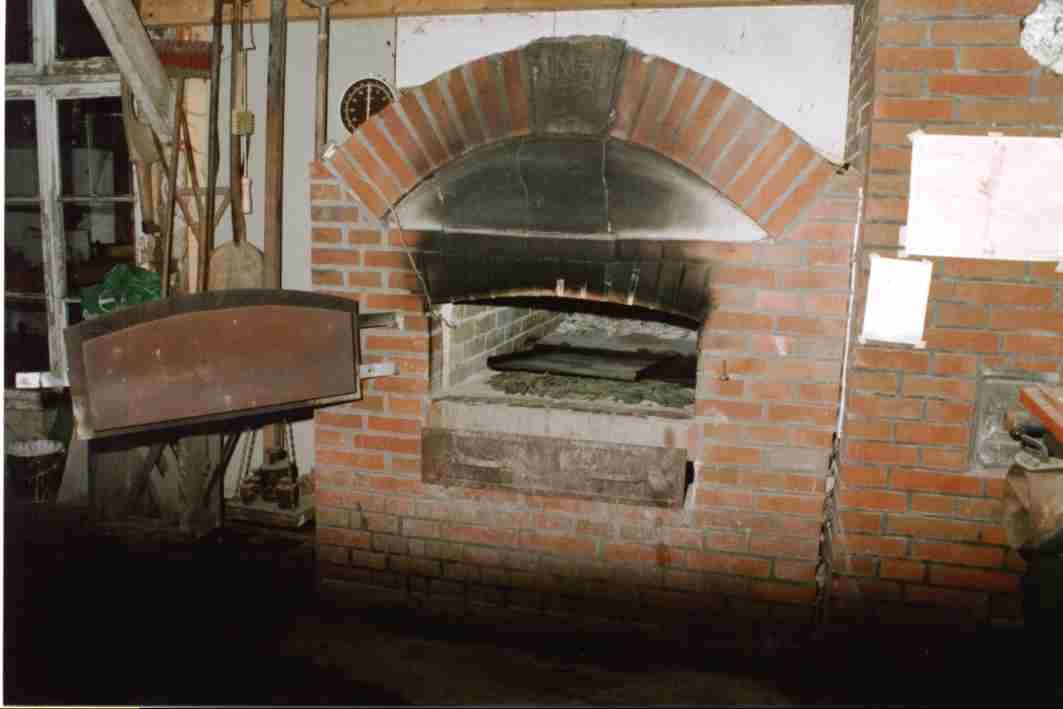
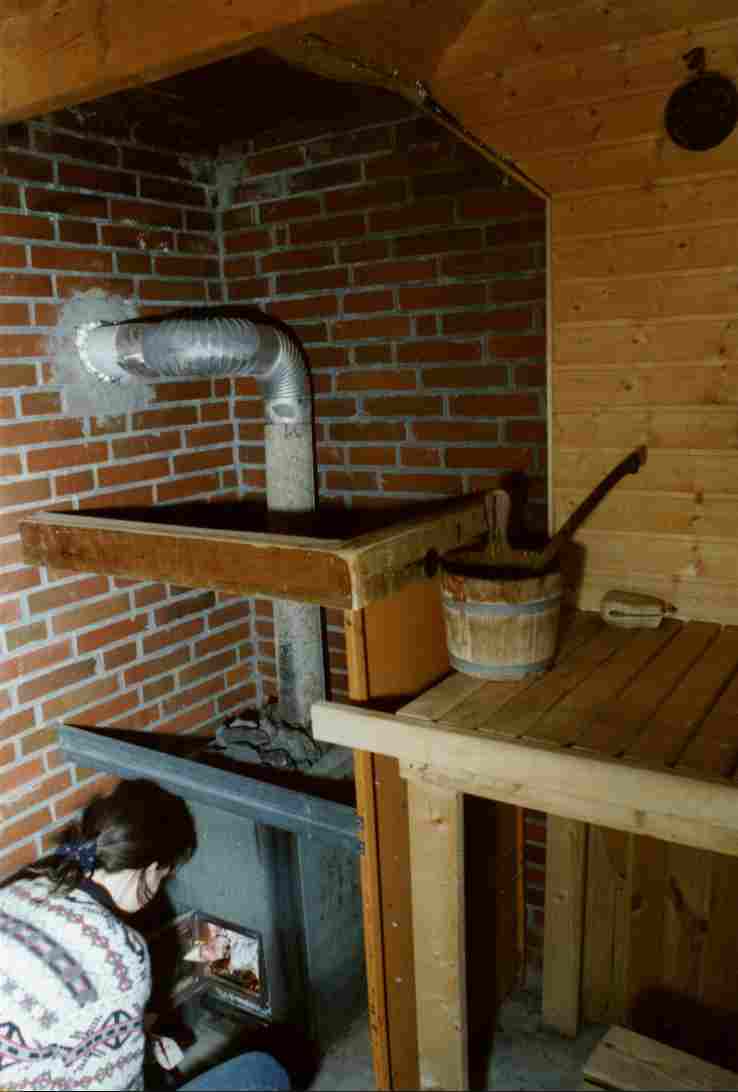 Once a week we sweat in the sauna and plunge into a cool basin. The stairs lead upstairs to a comfortable sitting and lounge corner. There is also a fireplace which has proved to be a highlight during spezial events. Here the sauna evening can be extended to an open end.
Once a week we sweat in the sauna and plunge into a cool basin. The stairs lead upstairs to a comfortable sitting and lounge corner. There is also a fireplace which has proved to be a highlight during spezial events. Here the sauna evening can be extended to an open end.
There are detective stories and fiction titles, a chest of drawes commode and a small play city.
The sun balcony with the solar shower allows enjoying the sun on a high level.
On the other side is the photo lab with four fully equipped workplaces. One is equipped with the Durst Autocolor 707 and a automatic colour developing machine (MetoForm 5240). To develop a film you can use the Jobo AutoLab ATL1. Für monochroms we also have an apparatus, the Durst-printo. Of course we can also provide the classic photo basins etc. Any photo literature can be found in the cupboard. If we have many people wanting to use the photo lab at the same time (youth leader training in the summer or photo courses) we are able to remove the wall to the adjacent room and darken this as well.
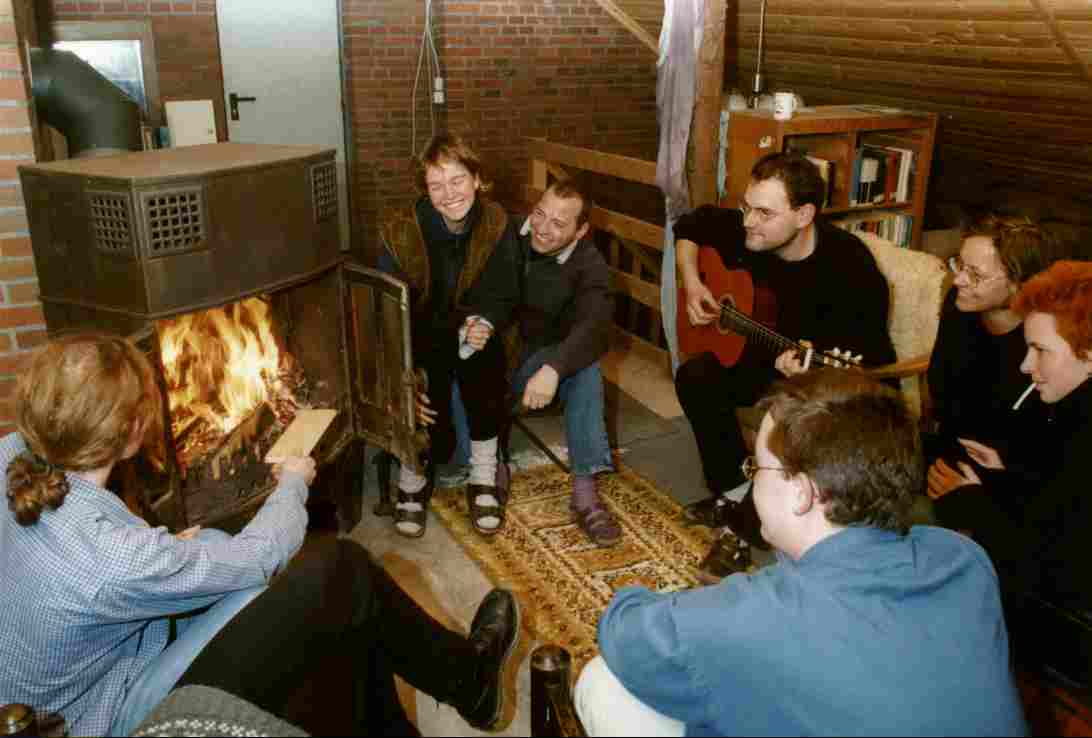
Otherwise this room is ideal as a conference room for eight people as the room has the necessary equipment and privacy. But you can also come here to read, we have about 500 English books and paperbacks stored here. The room is equipped with all sort of media like a Sat-TV (Astra und Eutelsat) and a computer (the pc can compose music with its keyboard). This is also the office of BUND e.V. Kreisgruppe Wesermarsch with the BUND-ISDN-phone (04735-810920). The internet access is available everywhere in the house via WLAN and with DSL - speed.
Back on ground level the tour now continues and we come to the veranda, where smokers can pursue their habits on a settee round at the old mill stone. On the other three tables we can have a little snack with up to 24 people when it is raining (for example cycling groups who visit us).
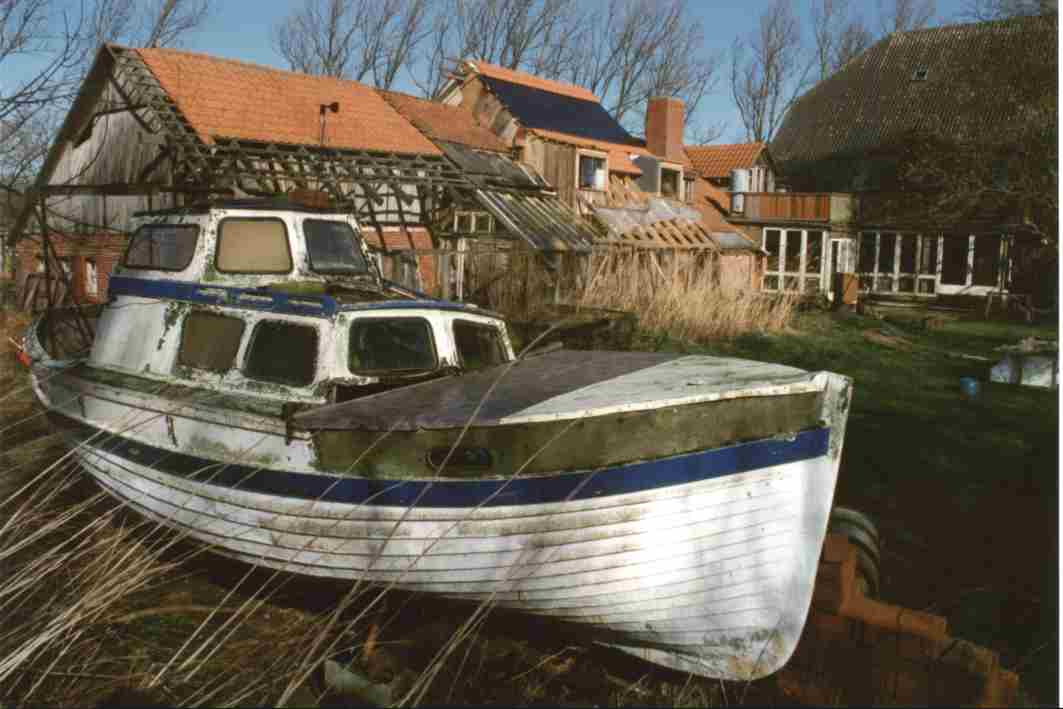
6. The dwarf garden and the "quay"
Leaving the veranda behind we enter the garden. Here you can see a lot of adventuresome objects like the Iffens boat, the tea pot tree, the plate tunnel and the wooden dwarfs. The old shipwreck lies next der Kaje. The portable smithy will also take place here.
Above we have rebuilt the children's playing house which is now much more solid than the old tree house.
In front of the plate tunnel is a roofed area (4 x 8 m) which can be used in all kind of ways at different occasions. Six standard tent tables fit into this covered space (which is enough for 48 people).
Alongside you will find the compost loo with a heart on the door.
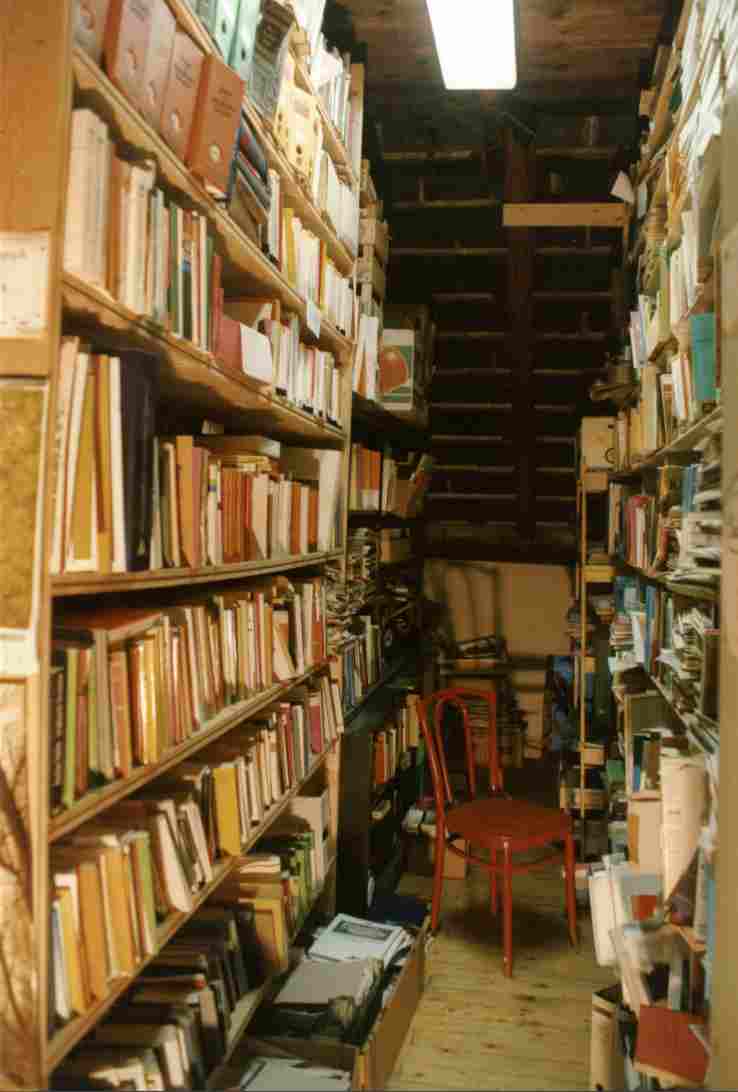
But we turn around and go back into the main building through the side door and up the stairs into the loft. One part is used for all the information on activities by environmental organizations, guest houses with conference possibilities and different work shop programs. We try to offer an outline about the variety of the environmental work in Germany. Next door there is a small exhibition on the history of the centre of environmental education, how it all started in 1978 and so on.
Going up the stairs you come to the library where you can find books about energy, environment techniques, traffic, tourisms, environmental protection, sociology, pedagogy, cultivation and gardening. There is also a multifrequency wave receiver, which enables us to listen to the whole world. We also have some other curiosities from the world of broadcasting/transmission and electro acoustic.
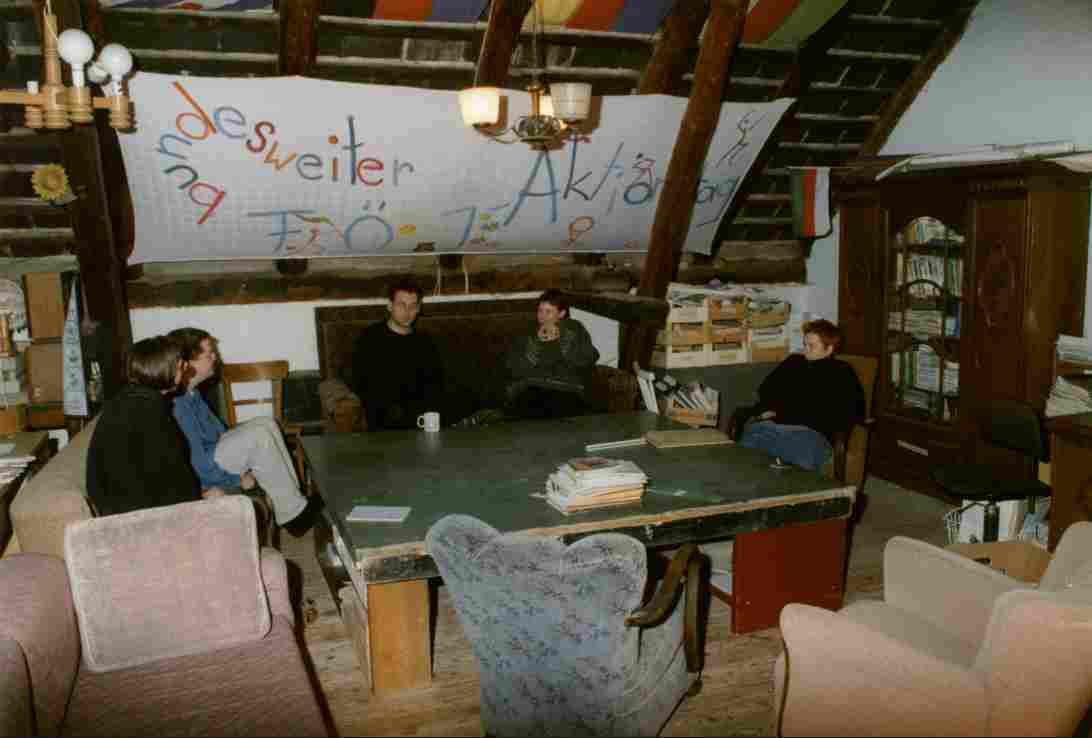
The Frisian corner is slightly more colourful with its four flags. Here we have collected Frisian and low German literature, cards, pictures etc. On the window side you can see desks for our volunteers, who have four rooms on this floor.
If we take the stairs upstairs, we come to the actual attic. The cupboards offer a huge choice of clothes either to use as working clothes or to play masquerade with them.
We go back downstairs to library, underneath which is the living area of the "Iffens-Team" with their kitchen, office and living room.
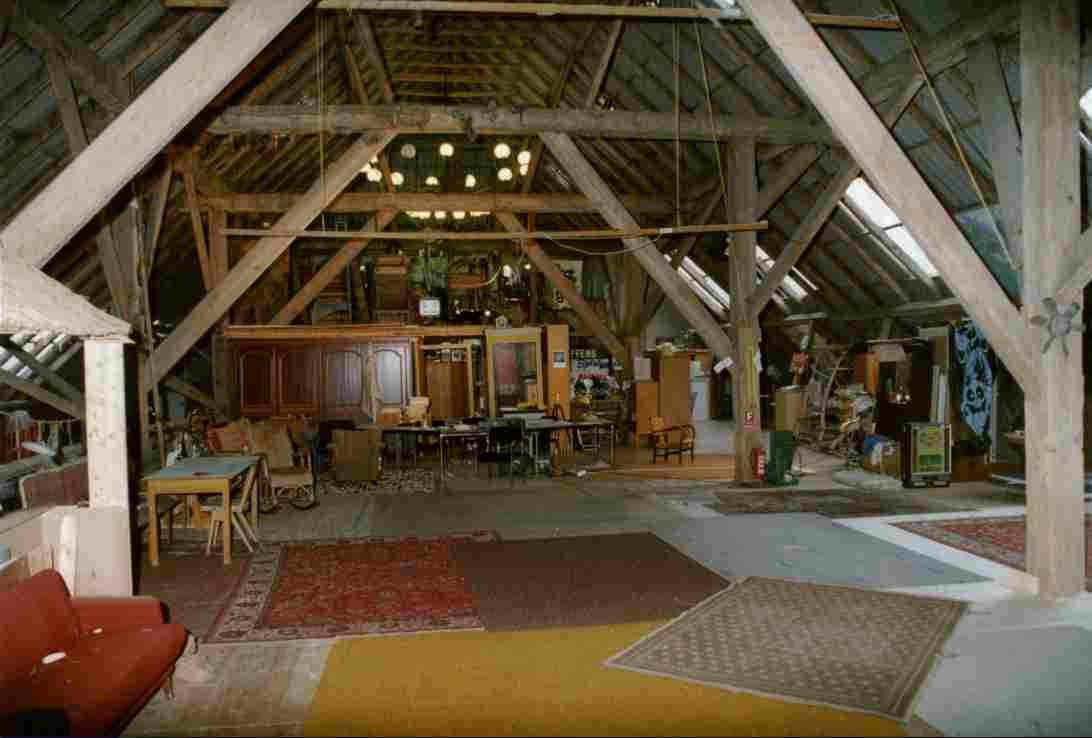
But we go back to the loft as we have not yet discovered everything like the bed swing or a lot of other things to try out. On this 700 m² space we have specific areas for a studio, electronics, the design and technology corner and the magazines archive. We have tried to organize the corners and cupboards according topics: sensory perception, instruments, plastic children's world, industrial region Nordenham, CD and record music, flea market, the so called bicycle radio and the hoarding.
Other areas are the agriculture floor and the topics aliments and textiles or the small tea museum. We now go down the stairs into the entrance area for the guests leaving the bike shed with 15 guests' bike at our right side.
We come back to the big conference room.
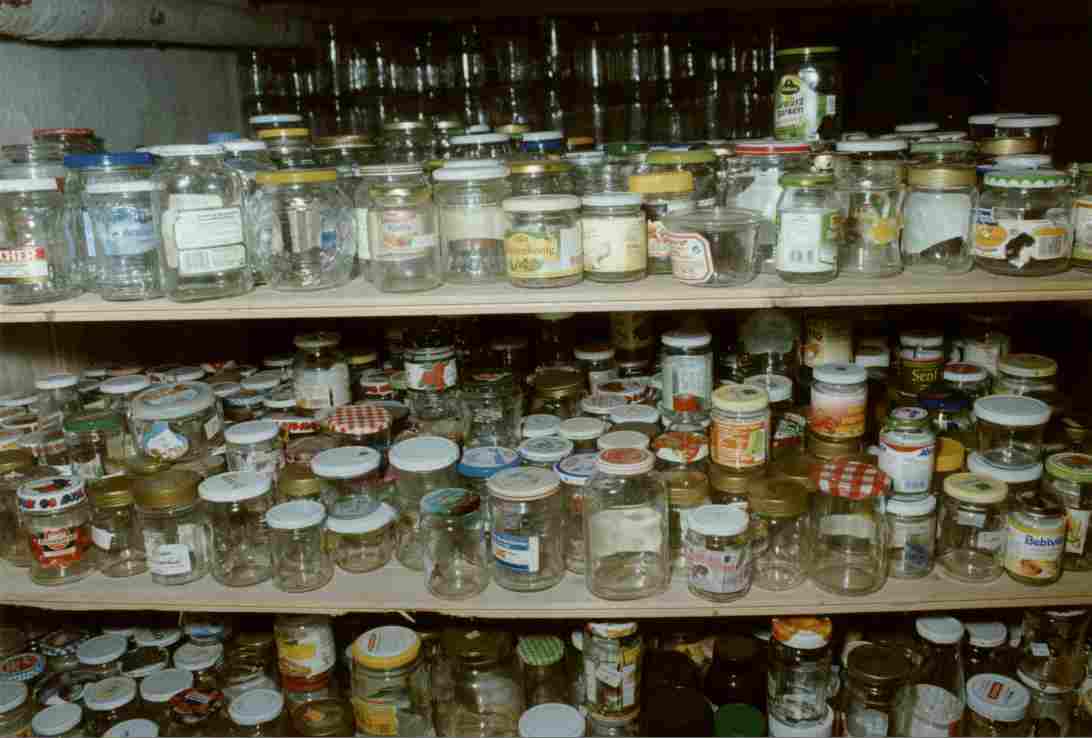 We haven't visited the wine cellar yet but maybe we will find some fresh cider on the table as a welcome.
We haven't visited the wine cellar yet but maybe we will find some fresh cider on the table as a welcome.
During this 333 metres long tour we have nearly seen everything. Now it is up to you not only to look at all the stuff but actually try out one or even more of the facilities which the station offers. Thus the difference between the inspection of a bike and its usage. That why we invite you after such tours to go round again by yourself and try out what you want.